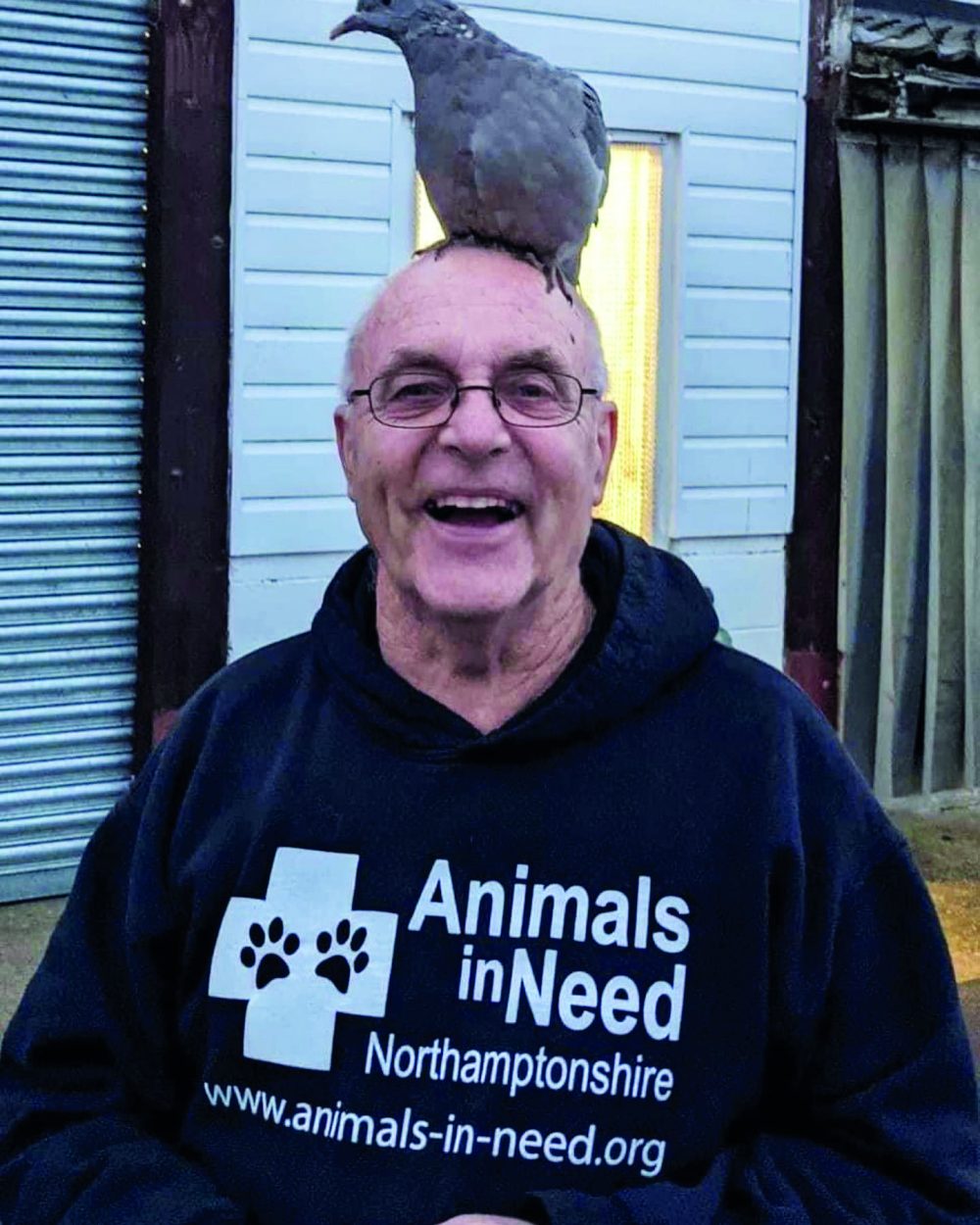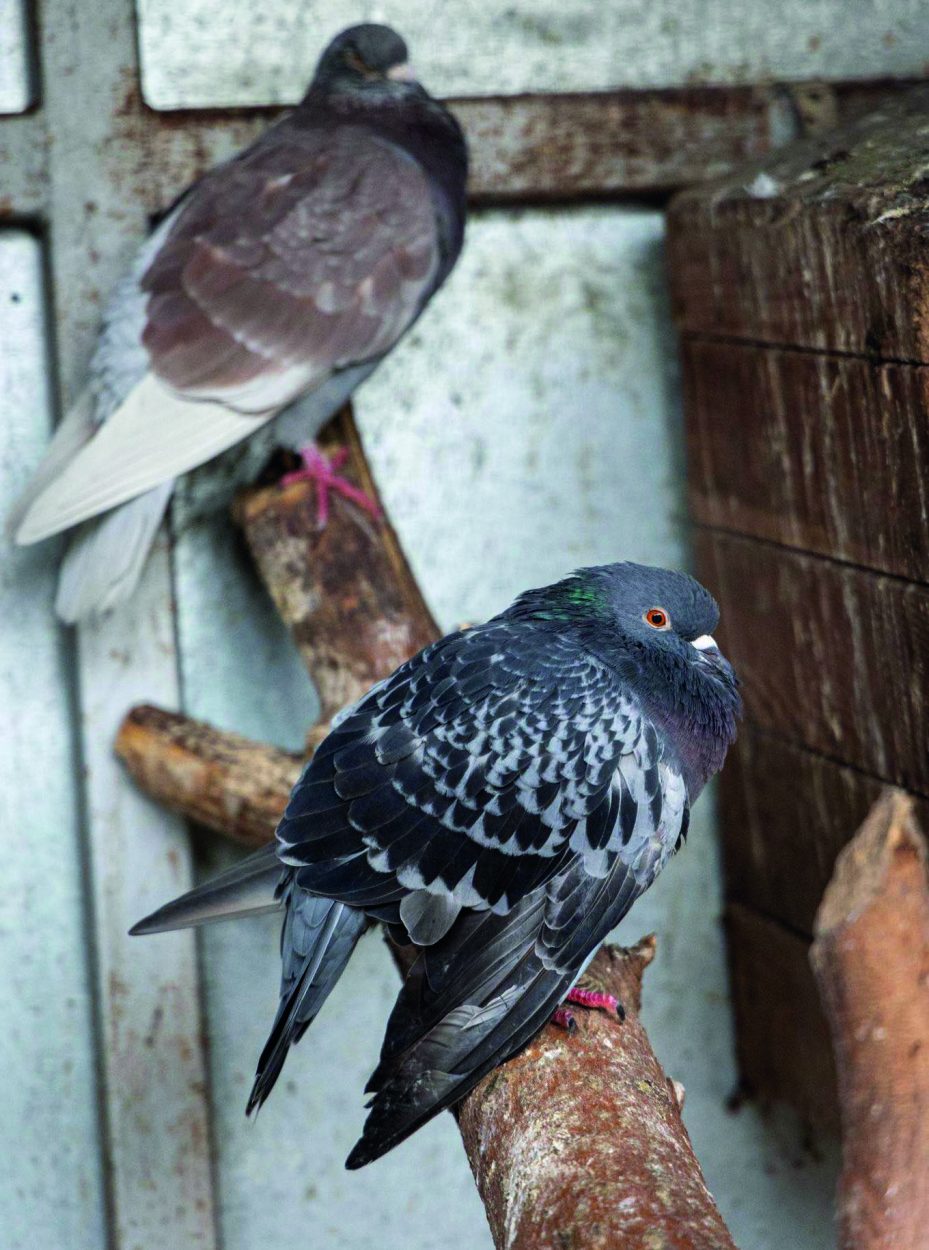Animals in Need explain why you should give pigeons a chance
Posted 30th April 2024
They are the feathered friends that aren’t. Pigeons are demonised by many, but as Annie Marriott from Animals in Need told Pulse’s Sammy Jones, ‘It’s time to separate the fiction from the fact.’
They are rats with wings, aren’t they? Vermin. Horrid, disease-carrying pests.
Those cruel sentiments are often levied at the humble pigeon, who quietly goes about his or her business not wanting to be a burden to anyone.
But is their reputation as a dirty, feathered foe deserved?
“Absolutely not. Pigeons will be pigeons, and we need to learn to co-exist with them better,” says Annie, “What you might not realise is that these birds have been domesticated for 1000s of years, with their beauty and intelligence being two reasons the birds were so revered.
“The increase in their numbers, and their soiling on buildings has seen them labelled, a little too readily, as pests.
“I’m no fan of pigeon poop any more than the next person, but we do have to give these birds some credit – simply putting spikes on buildings, while simultaneously removing so much of their habitat for homes and construction is not acceptable.”
Let’s address the issue commonly used as a reason to hate on them; Disease.
Yes, they do carry diseases – nasty sounding ailments like Cryptococcus and Histoplasmosis. When droppings are dry, they could become airborne which can see respiratory complaints follow, but most people will never get ill, and besides, pigeon droppings, like all poop, is waste material and best avoided.
The risk of pigeon-related diseases is so rare that you are much more likely to get sick eating those chicken wings from your favourite takeaway. Which debunks the myth that they are flying disease spreaders.
“If you are going to clean up droppings, I’d suggest you wear gloves and take precautions, but most people would do that anyway, surely?” Annie says, incredulous to think that people might be scrubbing plopsies from their window sills without covering their hands!

Pigeons are very social and often flock together. We have two at chez Jones who make good use of the bird feeder brimming with peanuts for our family of blue tits.
In fact, they make light work of emptying the feeder sometimes, but we don’t just tolerate them, we welcome them. We’ve called them Percy and Petula, and trust me when I say that my cats know their names too!
“It seems a little bit odd to me that people are content to use pigeons for racing purposes, but then on the other hand, don’t like to live alongside them.
“Let’s not forget their importance during conflict too – they delivered endless messages during WWII and hundreds of lives were saved as a result of their work as so-called military messengers. Dozens were rewarded with a Dickin Medal, which is known as the animals’ version of the Victoria Cross.”
Injured and sick pigeons are a frequent intake at Animals in Need, which cares for around 300 in any given year. We’ve taken some there ourselves; lethargic birds are at the mercy of predators and traffic and in desperate need of treatment.
“We see quite a few with ruptured crops that are usually caused by impact, so while the bird still eats, it will just fall out of the crop,” Annie said, “The good news about that is that it’s fairly simple for a vet to stitch it up and rectify the problem.
“Canker is the most prevalent issue though, and often proves fatal. It is a parasitic disease spread from direct contact with another infected bird, or through infected food and water – it also affects other bird species, which is why it’s always important to keep any water and food feeding stations clean.
“Canker really is vile, but it can be successfully treated if it is found in good time, and no, it cannot be spread to humans!
“We always have a large number of recuperating pigeons here, and the best thing is when we get to release a recovered pigeon back into the wild.”
Having discovered canker in a regular visitor to her garden, Vicky Bradfield-Mullenger travelled from Milton Keynes to pass the bird into the care of Annie’s team.
“I noticed it was eating very slowly and had fluffed its feathers out, it just didn’t look well,” she remembered, “I approached, and noticed it couldn’t see me as one eye was crusted over and stuck shut.
“I was able to catch it with a net and transport it to Animals in Need. I didn’t hold out much hope as previous pigeons I’d taken there with canker hadn’t survived, despite the best treatment,” Vicky said.
But this one was a plucky fighter.

“It was at Animals in Need for almost three months, but eventually was well enough for me to collect and release back into my garden, which was amazing – especially as its mate had been looking lost without its partner.
“I’m really grateful to the team there and make a regular donation to them each month. “Hopefully my small contribution helps support the wonderful work Animals in Need do,” she added.
But while some people go the extra mile to help the injured, sometimes the charity has to care for birds that have been wounded by humans.
One member of staff was called out to rescue two baby pigeons who had been thrown from a balcony before they were able to fly. The vicious, unprovoked attack proved fatal for one little bird. Thankfully, its sibling did recover.
“Humane deterrents can be employed if they are in an inconvenient place,” Annie said, “But if you aren’t a fan of these gentle birds, please show some understanding and tolerance.”
Here’s Annie’s advice for a successful bird rescue:
How to get close
Always remember that the pigeon will be scared and may be in pain. Approach with care so as not to cause extra stress or injury.
How do I retrieve the bird?
The best way to contain the bird, and prevent an injured bird from flying away is to gently place a towel over it. If there is a visible injury, attempting to move it yourself could exacerbate the problem. In that situation, pick up the phone to any wildlife rescue who will be able to advise, or assist.
How should I keep the bird safe before taking it to a rescue centre or veterinary practice?
If you are able to move the bird, place them in a cardboard box with plenty of air holes, and line the box with newspaper or snuggly towels. The box should be placed in a warm, quiet space.
Should I offer it food and drink?
Always make sure there is a supply of water in a shallow dish, but don’t feed the bird unless you have been advised by wildlife experts – if you feed the wrong thing, it could make a sick bird even more poorly.
When should I take it to a professional who can help?
As quickly as you can! The bird needs to be assessed and treatment started as soon as possible.
